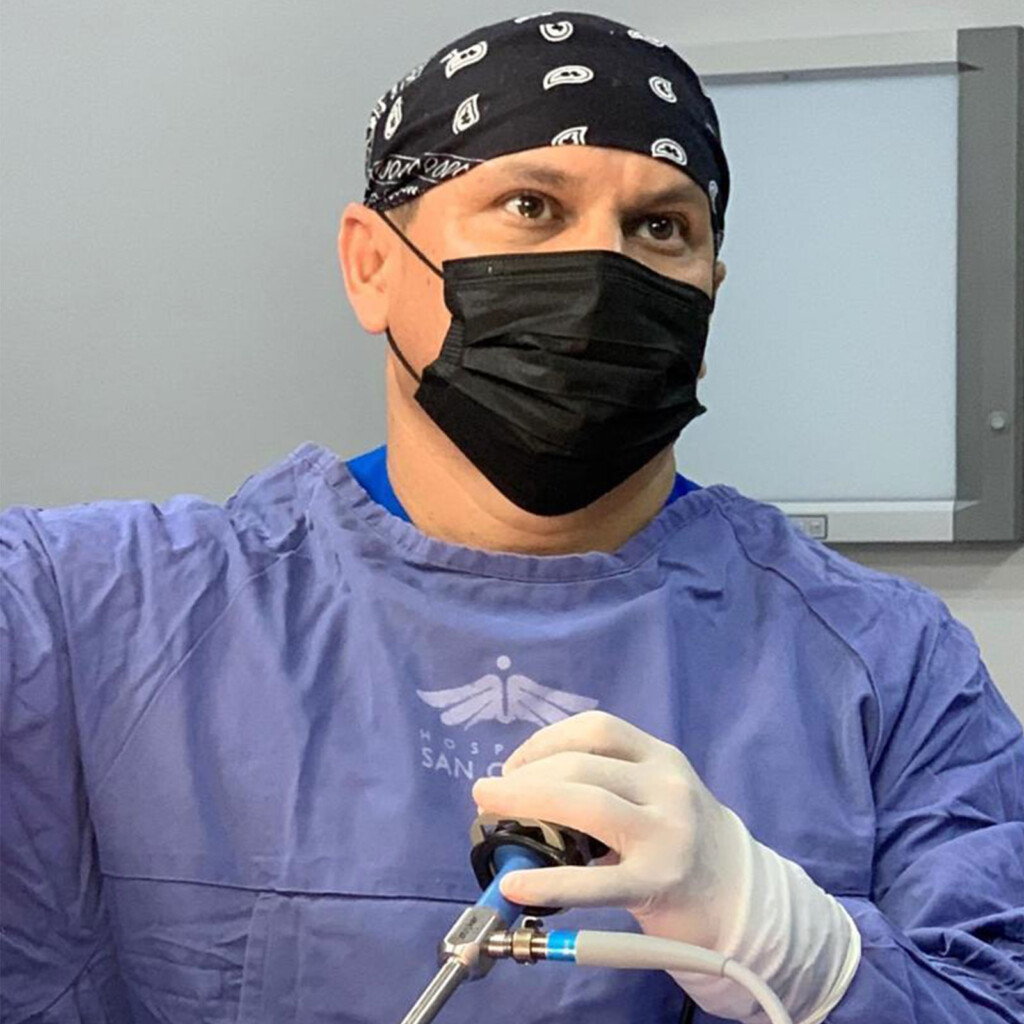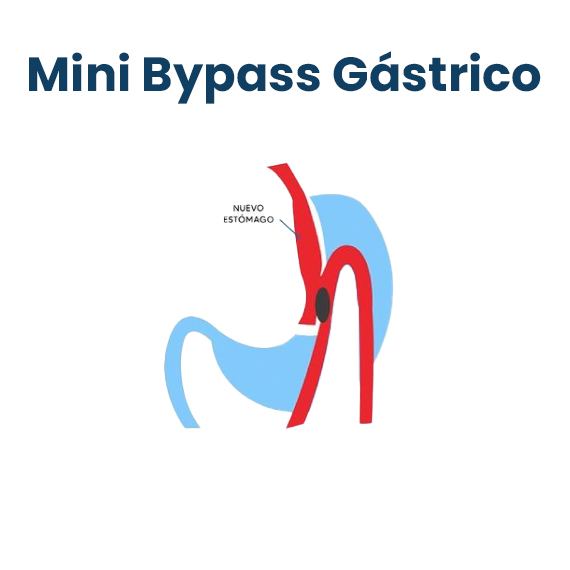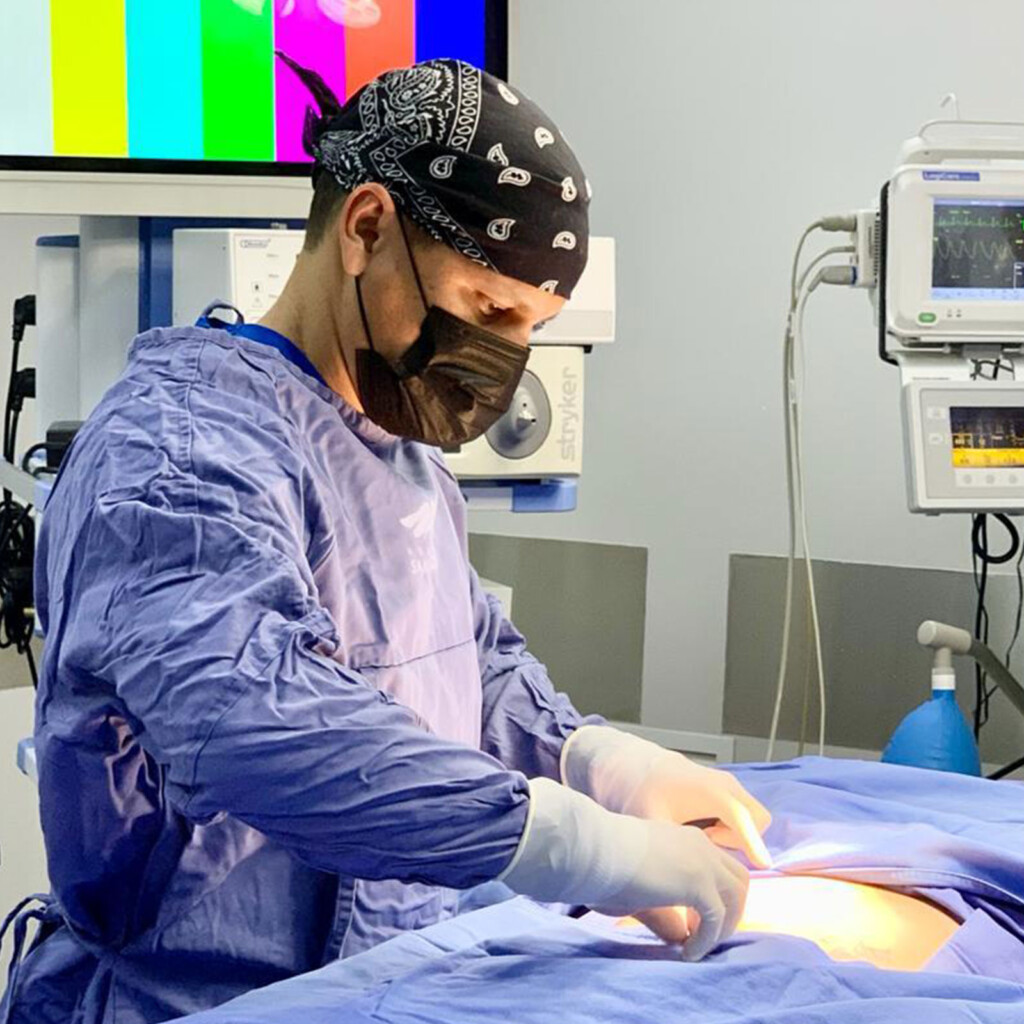

Mini Bypass and Bypass of One Anastomosis

Mini Bypass and Bypass of One Anastomosis
The mini gastric bypass or bypass of an anastomosis is a variant of the classic bypass, it was designed to have similar or better results than the conventional gastric bypass but with a less complex technique.

Frequent Questions
-
What does it consist of?
The procedure is performed laparoscopically under general anesthesia. Small incisions are made for the insertion of surgical instruments. With these instruments a new stomach is created, a long and thin tube by using endostaplers (50 to 80 ml capacity), this tube becomes the new smaller stomach with less capacity. The surgery takes approximately 60 minutes to perform.
-
How does it work?
By creating a new, smaller, and thinner stomach, the patient only consumes small amounts of food to satisfy their needs and with the “bridge” that is made to the passage of food, fats and carbohydrates are not properly absorbed, which consequently causes weight loss.
-
How much weight can I lose?
The mini-Bypass has a high percentage of success in weight loss: a loss of more than 80% of excess weight is expected, but it is important to remember that the program must be followed properly after surgery
-
To whom it can be done?
- People with obesity who have NOT responded to medical treatment ad extrema)
- People with a body mass index of 40 or more (extreme obesity)
- People with a body mass index greater than 35 with diabetes, hypertension, or another disease associated with obesity.
- People with dysfunctional or failed gastric banding or incomplete weight loss.
-
What advantages does it offer?
It is technically simpler and equally effective than a conventional gastric bypass.
- There is only one bond between the stomach and the intestine.
- It has a high percentage of success in weight loss.
- Reduces anxiety about eating and generates metabolic improvements.
- There is a great improvement in diseases previously caused by obesity such as diabetes, hypertension, metabolic problems, and cardiovascular disease, among many others.
- Improves the quality of life and self-esteem of the patient.
-
How long is the recovery time?
The recovery of the patient is fast, with one night of hospitalization is usually enough. The patient must go through a process to learn to eat differently in terms of quality and quantity and thus ensure long-term success.
Discover more procedures
that may interest you
Dare to take the step that will
change your health and improve your lifestyle.

